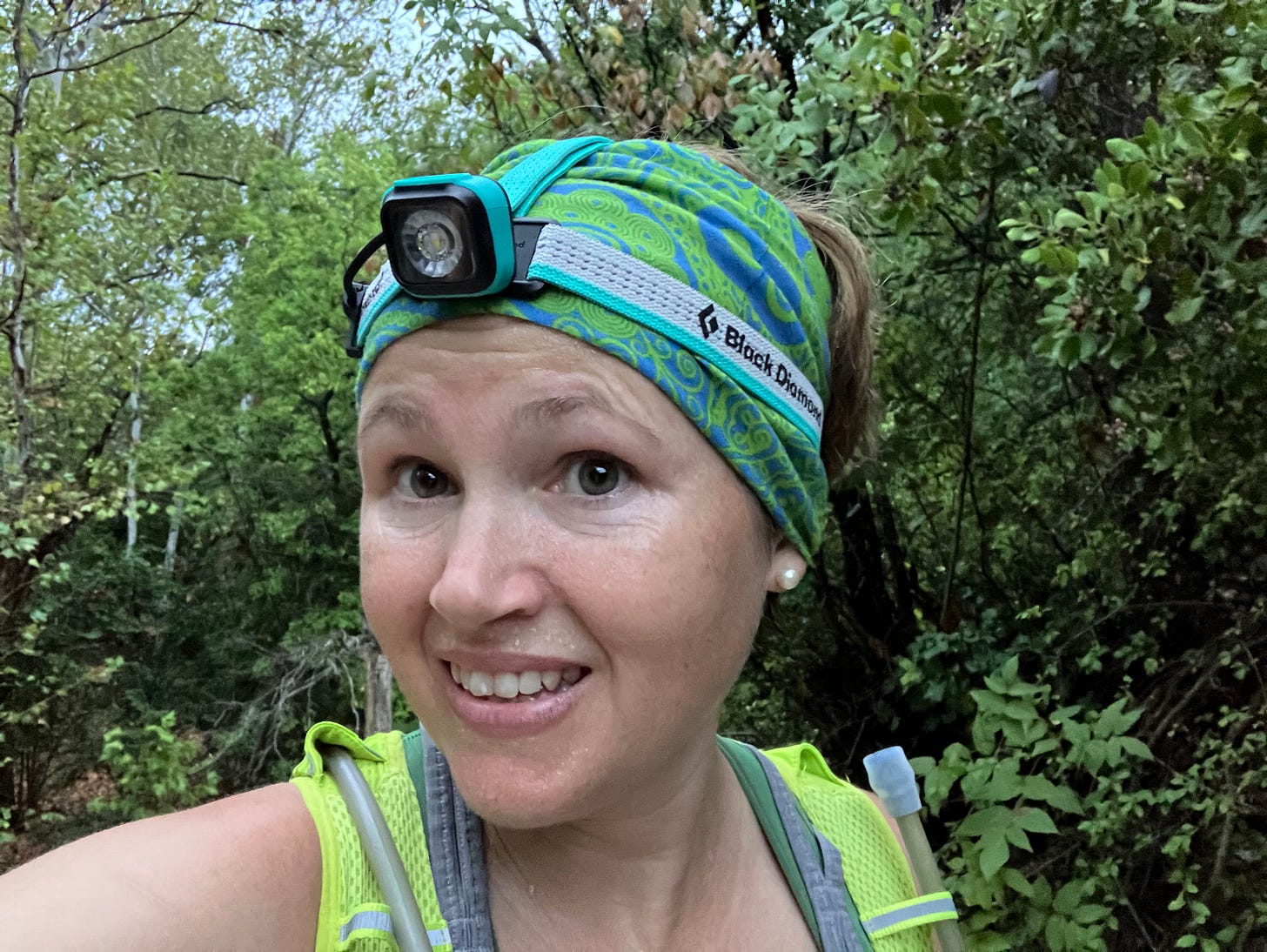At this point in my trail running process, assembling gear for a 20k is not a super big deal. I’ve already run a number of trail races over the past couple years of varying distances, so I already own and have tested the gear I need. Working through my race-checklist simply means pulling it out, making sure it’s clean and functional, and there you go.
But it doesn’t start that way.
For my first trail race, in January of 2020, I stressed about buying the right pair of trail shoes. I also trouble-shot a hands free way to carry water and nutrition on-course. Both worked great, by the way, but I did eventually go on to find trail shoes that I enjoyed more, and a hydration and nutrition pack that I preferred over this first iteration. It was part of a process.
My GPS watch, hydration packs, hats, trail shoes with varying levels of cushion, preferred shorts, sports bras, and tops all came later. I use these items regularly, and I’ve dialed in systems for using them in race settings too.
But there’s one piece of gear that I felt I needed to test run this week before my 20k.
You see, this Texas August race is run after the sun goes down. (For obvious reasons.)
This will not be my first night race, and I do already own a nice headlamp. However, I’m unsatisfied with its fit and feel. The light, the battery-life, the settings: all great. But I’m pretty sensitive to the hard piece of plastic bobbing around on my forehead after a while.
Getting good light to run by isn’t really a problem. It’s getting good light that’s also comfortable to wear. (Okay, some would argue that ultra running is all about enduring discomfort, but I’m here to say that the best ultra runners learn how to systematically eliminate discomfort as well . . . controversial, I know!)
For early ultra starts, when I’m only wearing the headlamp an hour or so until the sun comes up, it’s not been a big bother. It’s the summer night race setting that has highlighted how fit and feel absolutely matter for longer events. On my first night race, an eight miler up and down Spider Mountain in Burnett, Texas, I wore it successfully for a few ascents and descents, and then for the last down, I took it off in exasperation and carried it as a hand-light. Which worked. But I knew I wouldn’t want to have to do that for longer distances.
The next time that I needed my headlamp, I paired it with a buff, to place a bit of protection between my forehead and the light. Much better. But after a couple of hours it was still annoying. I was able to put up with it for the duration of Spider Mountain this past May, for twelve miles and about two and a half hours. However, I spent more than a small part of the race jealousy checking out the lighting solutions of other runners, and vowing to look into waist and chest lamps.
I just can’t imagine dealing with that elastic strap *all night long* in the case of my A race come February.
The trouble with a hundred miler is that I will be running a lot more than a couple of hours in the dark. And I suspect that of all of the discomforts I’ll be dealing with, that I don’t want my light source to be one of them!
To be honest, though I knew all summer I’d have this 20k B race on the docket, I hadn’t yet seriously looked into solutions. But I had mentioned this problem I was trying to solve to an individual who knows his headlamps . . . and this said individual found an opportunity to get his recommended headlamp into my hands this past weekend!
Queue the angel choir—
but tell them to leave their halos at home.*This* version of the headlamp has a much smaller and lighter plastic casing that sits on my forehead; the batteries are carried in a back casing, which is already infinitely more comfortable. But additionally, this version has a strap for the top of the head, which allows for more support, but less tension in the elastic going around my head, resulting in less pressure on the forehead under the light’s casing—yes!
I set an alarm for early this morning, and hit the trail pre-dawn to properly test this new gear.

The light functioned as I expected, but was only used for twenty minutes or so, pre-dawn. When the sun came out, I turned off the lamp, and left the gear on my head for the duration of my run to see how it felt after a few hours.
This may work perfectly!
And there was light, and it was good.




